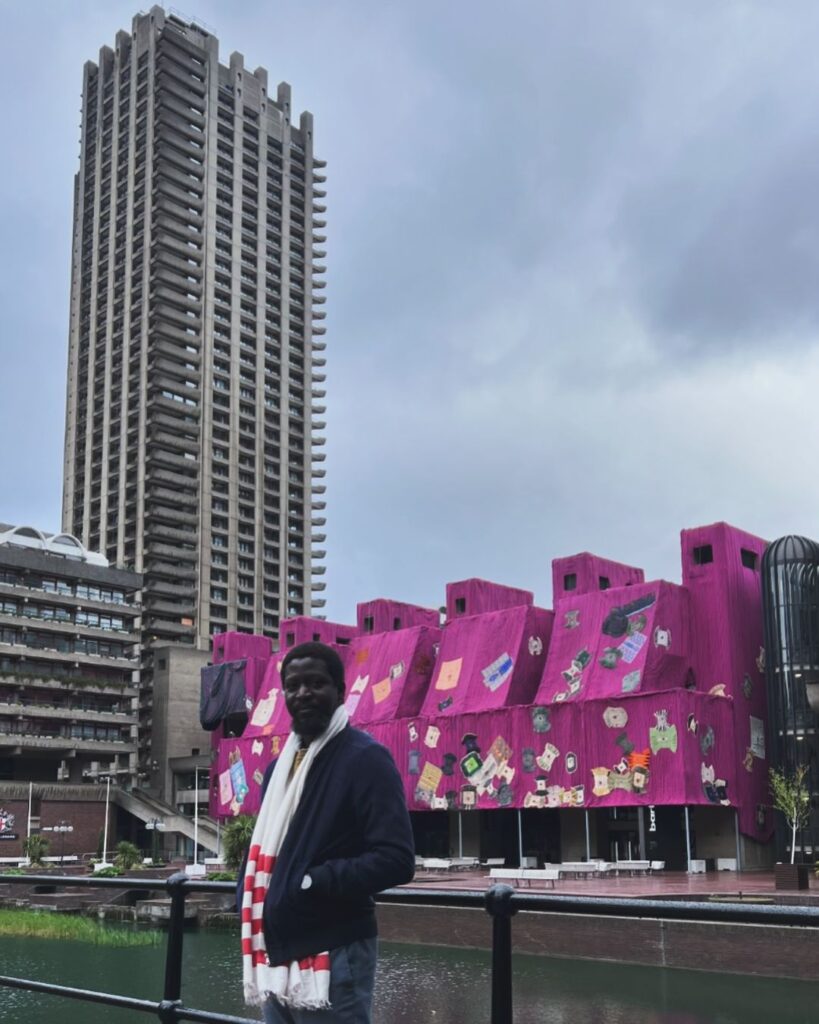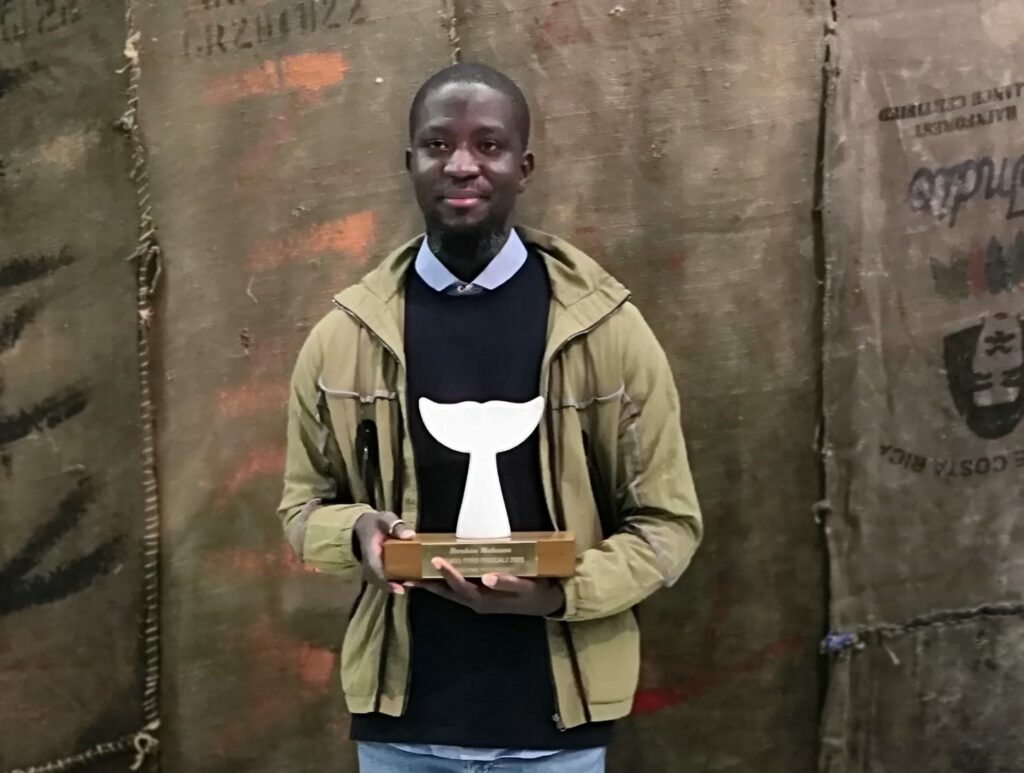In an extraordinary fusion of color, culture, and craftsmanship, Ghanaian artist Ibrahim Mahama has unveiled his latest masterpiece, “Purple Hibiscus,” at London’s renowned Barbican Centre. This monumental installation, spanning 2,000 square meters of handwoven textiles, transcends mere aesthetics to embody a profound exploration of identity, labor, and tradition.
Mahama’s journey to the Barbican began in his hometown of Tamale, Ghana, where he garnered international acclaim for draping buildings in curtains of tattered jute sacks—a poignant commentary on work, migration, and global trade inequities. For “Purple Hibiscus,” Mahama departed from his signature jute fabric, instead enlisting over 1,000 weavers and seamstresses to handcraft vibrant panels of pink-purple striped material. This monumental undertaking, spanning five months of meticulous labor, pays homage to the Barbican’s own history of hand-finished concrete surfaces, echoing the toil and craftsmanship of its construction.

Yet, Mahama’s choice of color was not merely aesthetic; it was a deliberate contrast against London’s typically gray skies, infusing the Barbican’s austere architecture with warmth and vibrancy. Inspired by Chimamanda Ngozi Adichie’s novel of the same name, “Purple Hibiscus” serves as a celebration of resilience and creativity, offering a kaleidoscopic reinterpretation of the Barbican’s urban landscape.
The installation’s visual impact is heightened by the inclusion of traditional Ghanaian robes known as “batakaris,” meticulously embroidered and imbued with centuries of cultural significance. Convincing locals to part with these cherished garments was no small feat, as Mahama navigated deeply entrenched superstitions surrounding their personal significance. Yet, these robes, adorned with signs of wear and history, lend “Purple Hibiscus” a profound sense of human connection and legacy.

Mahama’s artistic vision extends far beyond the confines of the Barbican’s walls. Through his cultural centers in Tamale, he seeks to create spaces that serve as both artistic sanctuaries and living history museums, reclaiming relics of colonialism and economic disparity as tools for regeneration and education. For Mahama, art is not just about aesthetics; it’s about harnessing the power of collective memory and experience to inspire future generations.
As “Purple Hibiscus” takes its place within the Barbican’s Unravel exhibition, it becomes more than just an artwork; it becomes a catalyst for dialogue, reflection, and social change. Mahama’s meteoric rise to international acclaim is not just a testament to his artistic talent, but to his unwavering commitment to uplifting communities and challenging preconceptions. With each thread meticulously woven, “Purple Hibiscus” invites us to reimagine our relationship with art, culture, and the world around us.
Don’t miss the opportunity to experience “Purple Hibiscus” at the Barbican Centre, as part of the Unravel exhibition, until August 18, 2024.


